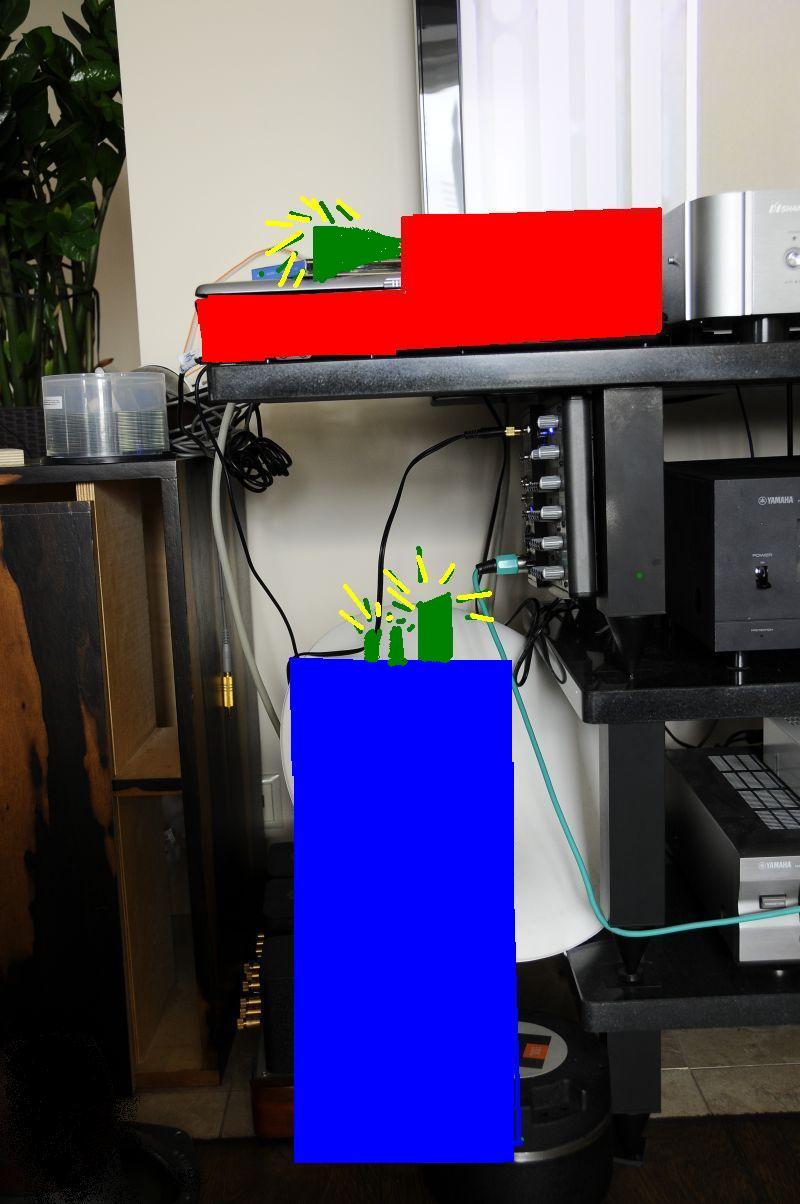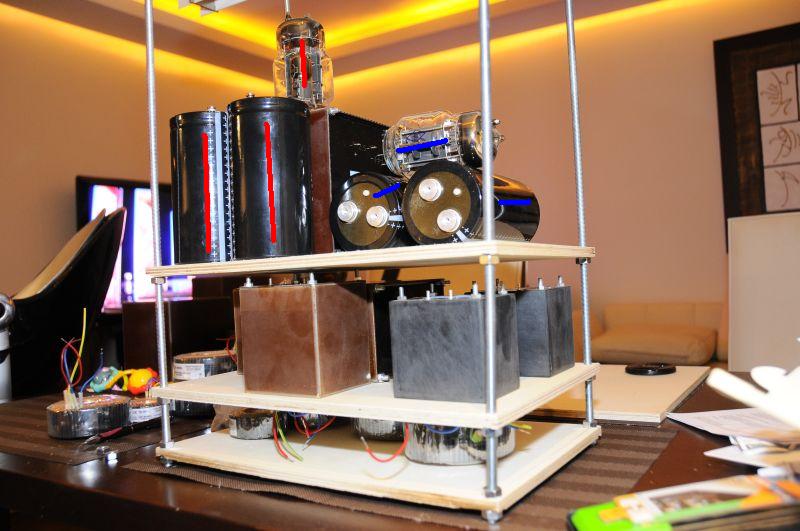|
fiogf49gjkf0d
When I decided to build this amp I know from the start that it will look not as 99% of amps. I do not like when transformers are visible.My wife hate this "mushroms" looks.
When I speaking with Pieter i told him to not poting chokes and transformers. He want to poting for couple reasons, so I say yes but also told him to not give to much work with looks (paint etc) .
I spend all sunday on thinking how to build the thing... It is first time so its not easy.
I took Roomy tips:
1) Keep point “M” as close to R2 as possible.
2) Keep point “L” as close to R18 as possible.
3) Keep C10 as close to OTP as possible.
4) Keep R4 and R6 as close to grid as possible.
5) Keep R5 close to grid as possible.
6) Bring the C4 and C5 ground leads right to the gas tubes sockets.
7) Keep the gas tube very close to the first stage’s grid
8) Keep filament supplies far for the signal paths
9) Keep OPT as close as possible to the V4
10) Keep V3 and V4 as close as possible.
11) Keep V4 with an island where no parts will be closer to the tube socket then a reasonable temperature permitted distance.
My room give my two options,
1. narow but high amp
2. separate PS and short amp 
If option one then it could look something like this:
Toroids sit on first floor. it could by vertical or horizontal position of transformers.
On second floor there are the chokes, next floor is OPT and big caps. Position of caps and lamps can by red or blue(to shorten way to chokes if it is nessesary).
What do You thing?
Best
Dominik
|